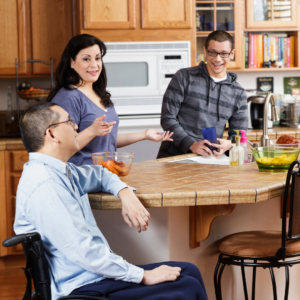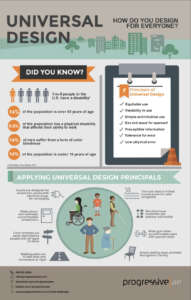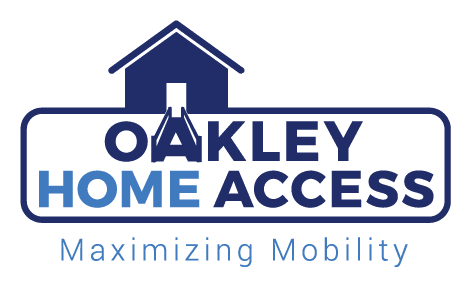Oakley Home Access Provides Home Modifications for All

Oakley Home Access specializes in providing solutions to help individuals age in place, and live independent lives in their home for as long as possible. We offer a range of products and services to support this goal, such as grab bars, stairlifts, ramps, and bathroom modifications. These home modifications can make daily tasks easier for seniors, reduce the risk of falls, and promote independence.
Beyond our traditional senior population, we also work with others in the community who need their homes modified to help maintain their independence and stay safe in their homes. Oakley Home Access strives to enhance the quality of life for ALL by helping them understand and make changes to their homes. Today we will review some ways home modifications can help people with a variety of conditions…and even those who want to incorporate universal design concepts into their homes.
Universal Design and Home Adaptations For All
Universal design is a concept that aims to create spaces, products, and environments that are accessible and usable by people of all abilities, ages, and backgrounds. The goal of universal design is to promote inclusivity and ensure that everyone, regardless of their physical or cognitive limitations, can navigate and interact with the world around them comfortably and safely.
In practice, universal design involves consideration of the diverse needs of all individuals during the design process. This includes factors such as providing multiple ways to access and use a space or product, incorporating features that cater to a wide range of abilities, and ensuring that information is presented in various formats to accommodate different learning styles.
By implementing universal design principles, we can create environments that are not only more accessible to people with disabilities but also more convenient and user-friendly for everyone. Whether it’s designing a building, a website, or a piece of technology, embracing universal design can lead to greater inclusivity, improved user experience, and a more equitable society for all.

Cerebral Palsy
Adapting a home to accommodate the needs of individuals with cerebral palsy can significantly enhance their quality of life and independence. There are various modifications that can be made to create a more accessible environment.
Installing ramps at entrances and stairways can make it easier for individuals using mobility aids such as wheelchairs or walkers to move around the house. Widening doorways and hallways can also provide more space for maneuvering. Also,lowering countertops and cabinets in the kitchen and bathroom can make these areas more accessible for individuals with limited reach or mobility.
Other adaptations may include installing grab bars in the bathroom for added support, using non-slip flooring to prevent falls, and ensuring that light switches and other controls are positioned at a height that is easily reachable. It is important to work with a professional who specializes in home modifications for individuals with disabilities to ensure that the adaptations are tailored to the specific needs of the individual with cerebral palsy. By creating a more inclusive and accessible living space, individuals with cerebral palsy can enjoy greater independence and comfort in their own homes.
Multiple Sclerosis
Multiple sclerosis (MS) is a condition that affects the central nervous system, leading to a variety of symptoms that can impact mobility and daily living. For individuals with MS, making adaptations to their home can greatly improve their quality of life and independence. Some common home adaptations for those with MS include installing grab bars in the bathroom and near the bed to assist with balance and mobility, using non-slip mats in the bathroom to prevent falls, and widening doorways to accommodate mobility aids such as wheelchairs or walkers.
Lowered countertops and cabinets in the kitchen can make it easier for individuals with MS to prepare meals without straining themselves. Installing ramps at entrances and removing tripping hazards such as loose rugs can also help prevent falls. Consideration should also be given to lighting, as individuals with MS may be sensitive to glare or have vision issues. Using adjustable lighting and installing task lighting in work areas can be beneficial.
Children With Special Needs
Adapting a home to meet the needs of special needs children is crucial for creating a safe and comfortable environment where they can thrive. One important adaptation is to ensure that the home is wheelchair accessible, if needed. This may involve installing ramps and widening doorways to make daily activities more manageable.
Another key consideration is sensory-friendly design. Special needs children may have sensitivities to light, noise, or textures, so it’s important to create a calming environment. This can be achieved by using soft lighting, sound-absorbing materials, and choosing furniture and decor that are comfortable and soothing.
Any home modification starts with our FREE Home Safety Assessment where you will receive personalized recommendations to make your home safe, comfortable, and accessible regardless of your disability or condition. Call us today to get started.
